Connecting XOR and XOR games Lorenzo Catani1Ricardo Faleiro2Pierre-Emmanuel Emeriau3 Shane Mansfield3 and Anna Pappa1 1Electrical Engineering and Computer Science Department
2025-04-27
1
0
728.74KB
15 页
10玖币
侵权投诉
Connecting XOR and XOR* games
Lorenzo Catani1,∗Ricardo Faleiro2,†Pierre-Emmanuel Emeriau3, Shane Mansfield3, and Anna Pappa1
1Electrical Engineering and Computer Science Department,
Technische Universitat Berlin, 10587 Berlin, Germany
2Instituto de Telecomunicações,
Avenida Rovisco Pais 1,049-001, Lisboa, Portugal
3Quandela, 7 Rue Léonard de Vinci, 91300 Massy, France
In this work we focus on two classes of games: XOR nonlocal games and XOR* sequential games
with monopartite resources. XOR games have been widely studied in the literature of nonlocal
games, and we introduce XOR* games as their natural counterpart within the class of games where
a resource system is subjected to a sequence of controlled operations and a final measurement.
Examples of XOR* games are 2→1quantum random access codes (QRAC) and the CHSH* game
introduced by Henaut et al. in [PRA 98,060302(2018)]. We prove, using the diagrammatic language
of process theories, that under certain assumptions these two classes of games can be related via an
explicit theorem that connects their optimal strategies, and so their classical (Bell) and quantum
(Tsirelson) bounds. We also show that two of such assumptions – the reversibility of transformations
and the bi-dimensionality of the resource system in the XOR* games – are strictly necessary for the
theorem to hold by providing explicit counterexamples. We conclude with several examples of pairs
of XOR/XOR* games and by discussing in detail the possible resources that power the quantum
computational advantages in XOR* games.
I. INTRODUCTION
Computational tasks for which quantum strategies
outperform classical ones have long been and are still
an important focus of study. A well-known example
is the CHSH game, a way of recasting the Clauser-
Horne-Shimony-Holt (CHSH) formulation [1] of Bell’s
celebrated theorem [2] into a game for which quantum
strategies can provide an advantage over classical ones.
It is a cooperative game with two players, Alice and Bob,
who agree on a strategy before the game begins but are
separated and unable to communicate with each other
once the game is in progress. A referee poses one of two
binary questions to each player, and the players win if
the sum of their answers equals the product of the ques-
tions (arithmetic is modulo 2). The bound on the perfor-
mances of classical strategies is known as the Bell bound,
while in the quantum case the maximum winning prob-
ability is known as the Tsirelson bound [3]. The CHSH
game is of great importance due to the dependence of
its optimal success probability on the underlying theory
describing the implemented strategies, which gives us a
tool to experimentally distinguish between distinct phys-
ical theories. Scenarios that involve violations of the Bell
bound are said to manifest “nonlocality” (meaning that
the statistics they show are inconsistent with a descrip-
tion in terms of a local hidden variable model [2]), and
the Tsirelson bound can be interpreted as a quantifier
of how nonlocal quantum theory is within the broader
landscape of all possible no-signaling theories. Nonlocal-
ity is also known to be a useful resource for applications
∗lorenzo.catani@tu-berlin.de
†ricardofaleiro@tecnico.ulisboa.pt
in quantum technology, e.g., in device-independent cryp-
tography [4–6] and it can be considered to be a special
form of the more general notion of contextuality [7, 8],
known to be a necessary ingredient for quantum advan-
tage and speedups in a variety of settings [9–35].
Inspired by the CHSH game, broad classes of nonlo-
cal cooperative games have been proposed. These in-
volve, in their simplest formulation, two spatially sepa-
rated parties performing operations on some shared re-
source system, while being forbidden from communicat-
ing. Moreover, there also exist games cast in different
setups that show the same classical and quantum bounds
as the CHSH game [9, 36–38]. These do not involve two
spatially separated parties performing local operations
on the corresponding systems, but only an input resource
system subjected to an ordered sequence of transforma-
tions or measurements. We refer to this kind of games
as monopartite sequential games. Obviously, in these
cases, the Tsirelson bound cannot be read as a quan-
tifier of the nonlocality of quantum theory and it be-
comes natural to wonder about the nature of the source
of the quantum-over-classical advantage in such games,
and whether there is a deep connection between these
protocols and nonlocal games.
In this work we address these questions for particu-
lar classes of nonlocal and monopartite sequential games
that include various known games studied in the liter-
ature. More precisely, we focus on a subclass of non-
local games – XOR games [39] – where the goal is to
satisfy the condition that a (possibly nonlinear) func-
tion of the inputs equals the XOR (or sum modulo 2)
of the output bits. Via Theorem 1, we relate a sub-
set of these to a class of monopartite sequential games –
the XOR* games – where the goal is to obtain, as sin-
gle output, the (possibly nonlinear) function of the in-
arXiv:2210.00397v4 [quant-ph] 5 Feb 2024
2
puts. The already mentioned CHSH game is the most
famous example of an XOR game, but other examples
within this class exist in the literature, such as the EAOS
game [40, 41] where Alice and Bob have to compute a
Kronecker-delta function of the input trits. Regarding
XOR* games, examples are the 2→1quantum random
access codes (QRACs)[36], 2→1parity oblivious multi-
plexing (POM) [9] and CHSH* [38] games. By virtue of
our categorisation, the CHSH* game emerges as the nat-
ural XOR* version of the CHSH game and the QRACs
read as the XOR* versions of an XOR game which is dif-
ferent from the CHSH game. This may sound surprising,
as the 2→1QRAC is usually associated to the CHSH
game in that it shares the same values for the Bell and
Tsirelson bounds [42].
Crucial in our work is Theorem 1: it allows us to con-
nect the optimal quantum strategies for the classes of
XOR and XOR* games. The theorem involves certain
assumptions: bounding the cardinalities of the inputs
(as a consequence of the use of a lemma due to Cleve
et al. [39]) and restricting the XOR* games to those
involving only two-dimensional (2D) resource systems.
These constraints do not prevent the result to apply to
a number of known XOR and XOR* games present in
the literature. We describe the main ones in subsection
III C and, as a consequence of our framework, we also
define the XOR versions of known XOR* games such as
the 2→1QRAC [36], the binary output Torpedo game
[33], and the Gallego et al. [43] dimensional witness.
Theorem 1 also assumes that the strategies of the XOR*
games involve only reversible gates. We show how this
assumption is strictly necessary for the theorem to hold
by providing an example of XOR* game where the use of
(irreversible) reset gates can create a quantum-classical
performance gap that does not arise if considering only
reversible gates. We refer to this feature as reset-induced
gap activation. The mapping described in Theorem 1 can
be used to show that preparation contextuality [44] is a
resource for outperforming classical strategies in certain
XOR* games (see B). The reason is that the established
proofs of nonlocality as a resource for outperforming clas-
sical strategies in XOR nonlocal games can be mapped
to proofs of preparation contextuality in monopartite se-
quential games (interpreted as prepare and measure sce-
narios) via the mapping of the theorem. However, this
argument does not apply to all the XOR* games that
mimic the quantum over classical computational advan-
tages of the XOR games and, crucially, does not apply to
what we define as dual XOR* games of the XOR games
under consideration. For example, it does not apply to
the CHSH* game. We provide a thorough analysis of
this fact and of why other typical candidates employed
to explain the origin of the quantum advantage do not
work in the case of XOR* games. We conclude by outlin-
ing a proposal to develop a new notion of nonclassicality
in the spirit of generalized contextuality that applies to
these games.
The remainder of the paper is structured as follows.
In section II we describe nonlocal games and monopar-
tite sequential games, focusing specifically on XOR and
XOR* games. In section III we relate XOR and XOR*
games via Theorem 1, which establishes a mapping be-
tween these two classes. In particular, we prove Theo-
rem 1 using a diagrammatic approach according to the
formalism of process theories [45], and we give various
examples of games within these classes. In section IV we
discuss why the typical features employed to explain the
quantum computational advantage in information pro-
cessing tasks do not apply in the case of XOR* games
and we advance a proposal to overcome this problem. In
section V we discuss the significance of the results and we
outline future challenges. Finally, we relegate all proofs
of the stated lemmas to A.
II. XOR NONLOCAL GAMES AND XOR*
SEQUENTIAL GAMES
Acooperative game consists of a protocol involving
some number of agents (players) that cooperate to per-
form a certain task. In order to win the game the play-
ers have to come up with a strategy to produce outputs
which successfully compute a task function of the inputs
provided by a referee. We formulate the winning condi-
tion as a predicate that equates the task function with
a function of the outputs. A game is also specified by
the setup it is played in. The setup is defined by a list
of elements that compose the protocol, e.g., the kind
and number of resource systems involved, the number
and cardinalities of inputs and outputs, and the number
and sequential order of operations like transformations
or measurements (controlled by the players). The list
of actions that each player has to adopt given particular
values of the inputs defines a strategy for the game. Each
strategy has to obey possible restrictions that, given the
specification of the setup, the protocol posits. The typi-
cal example of such a restriction, in the context of nonlo-
cal games where the players are spatially separated and
cannot communicate, is the principle of no-signaling. No-
tice that these restrictions are theory-independent, in the
sense that they must be obeyed independently of the pre-
cise operational theory (e.g., classical or quantum theory)
that the strategies of the players are formulated in.1
Finally, a game, in general, can also be specified by ex-
tra constraints that do not emerge from the setup, but are
artificial constraints that are imposed on the set of pos-
sible strategies. Examples of these are the parity oblivi-
ousness in the parity oblivious multiplexing game [9], the
dimensional constraint in quantum random access codes
1The term “theory-independent” is standard in the literature of
device-independent protocols (see for example [46]). With this
it is meant that the restrictions have to be obeyed by all the
operational theories that are under comparison (e.g., classical,
quantum and GPTs).
3
[36, 47] and, more recently, the information restriction
on the communication channel in the protocols consid-
ered in [46]. The purpose of introducing these artificial
constraints is to allow for an interesting categorisation of
the strategies, i.e., to create a performance gap between
distinct operational theories. In other words, thanks to
these constraints, it is possible to separate the perfor-
mances of the strategies depending on the operational
theory they are formulated in. In particular, they al-
low to observe performance gaps between classical and
quantum strategies. Given some game G, such a gap
is characterised by a positive quantum-over-classical ad-
vantage,2Ω(G) := ωq(G)−ωc(G)>0, where ωq(G)and
ωc(G)denote the highest probabilities to win Gby means
of quantum and a classical strategy, respectively called
the quantum value and classical value of the game. No-
tice that when we say “classical” and “quantum” strate-
gies we mean strategies that employ systems that are
prepared, transformed and measured according to the
rules of the respective theory. Furthermore, when re-
ferring to the quantum-over-classical advantage and/or
the classical and quantum values for games bearing ar-
tificial constraints, we will explicitly write the type of
constraint in the notation. For instance, XOR* games re-
stricted to two-dimensional resources and reversible op-
erations, which we will extensively deal with later on,
have their quantum-over-classical advantage written as
Ω(XOR∗|Rev
2D) := ωq(XOR∗|Rev
2D)−ωc(XOR∗|Rev
2D).
In summary, a game is formally defined by a specifica-
tion of a setup, predicate, restrictions and possible arti-
ficial constraints. In this section we are interested in two
broad classes of games: nonlocal games and monopartite
sequential games, which we now define in the case of two
players (figure 1).
Definition 1 (Two-player Nonlocal game).
•Setup: the two players, Alice and Bob, receive in-
puts s∈ S and t∈ T , respectively, sampled from a
known probability distribution p(s, t), where Sand
Tdenote tuples of dits of finite dimension. Be-
fore the game starts, Alice and Bob can agree on a
strategy, while they cannot communicate after the
game starts. Such a strategy could involve using a
shared resource system on which they perform lo-
cal operations (transformations and measurements)
controlled by the values of their respective inputs.
Each player has to provide an output, denoted with
a∈ A for Alice and b∈ B for Bob, where Aand B
denote tuples of dits of finite dimension.
•Restriction: the restriction of the setup is the no-
signalling condition, that prevents Alice and Bob
2In the following, we will refer to the quantum-over-classical ad-
vantage also as “quantum-classical gap” or “performance gap”.
– in spatially separated locations – from communi-
cating during the game,
p(a|st) = p(a|s); p(b|st) = p(b|t).(1)
•Predicate:
Wg|f(a, b|s, t) = 1if f(s, t) = g(a, b)
0otherwise.(2)
The function f(s, t)is what we called the “task function”
at the beginning of the section.
Definition 2 (Two-player Monopartite Sequential
game).
•Setup: the two players, Alice and Bob, receive in-
puts s∈ S and t∈ T , respectively, sampled from
a known probability distribution p(s, t), where S
and Tdenote tuples of dits of finite dimension.
They are ordered in sequence, say Alice before Bob
( denoted as “A < B”). Alice is given a single re-
source system on which she applies one operation
controlled by the value of the input sshe receives.
The system is forwarded to Bob on which he also
applies one operation controlled by the value of the
input the receives. At the end the resource sys-
tem is subjected to a fixed measurement. In this
way it is subjected to a ordered sequence of opera-
tions (transformations or measurements) controlled
by the inputs, and the strategy the players agree on
consists of choosing the resource system, the con-
trolled operations and the measurement. The out-
come m∈ M of the measurement is the output of
the game, where Mdenotes a tuple of dits of finite
dimension.
•Restriction: analogously to the principle of no-
signaling in nonlocal games, the physical restric-
tion on the game is here that the communication
between the players cannot violate the causal struc-
ture imposed by the setup. This means that Bob
cannot signal backwards to Alice. This is called the
principle of weak-causality [48] and can be written
as follows,
p(a|s, t) = p(a|s),(3)
where ais the variable associated with Alice’s
choice of operation.
•Artificial constraints: They might be of various
types. For example, reversibility of operations, di-
mensional constraints on the resource, parity obliv-
iousness, informational restriction of the channels,
etc.
•Predicate:
Wf(m|s, t) = 1if f(s, t) = m
0otherwise.(4)
摘要:
展开>>
收起<<
ConnectingXORandXOR*gamesLorenzoCatani1,∗RicardoFaleiro2,†Pierre-EmmanuelEmeriau3,ShaneMansfield3,andAnnaPappa11ElectricalEngineeringandComputerScienceDepartment,TechnischeUniversitatBerlin,10587Berlin,Germany2InstitutodeTelecomunicações,AvenidaRoviscoPais1,049-001,Lisboa,Portugal3Quandela,7RueLéona...
声明:本站为文档C2C交易模式,即用户上传的文档直接被用户下载,本站只是中间服务平台,本站所有文档下载所得的收益归上传人(含作者)所有。玖贝云文库仅提供信息存储空间,仅对用户上传内容的表现方式做保护处理,对上载内容本身不做任何修改或编辑。若文档所含内容侵犯了您的版权或隐私,请立即通知玖贝云文库,我们立即给予删除!
相关推荐
-
公司营销部领导述职述廉报告VIP免费

 2024-12-03 4
2024-12-03 4 -
100套述职述廉述法述学框架提纲VIP免费
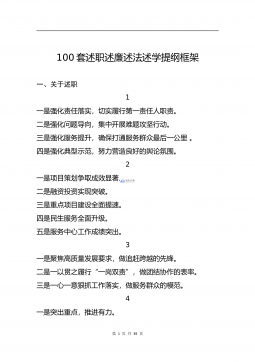
 2024-12-03 3
2024-12-03 3 -
20220106政府党组班子党史学习教育专题民主生活会“五个带头”对照检查材料VIP免费
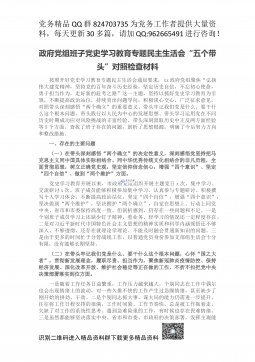
 2024-12-03 3
2024-12-03 3 -
20220106县纪委监委领导班子党史学习教育专题民主生活会对照检查材料VIP免费
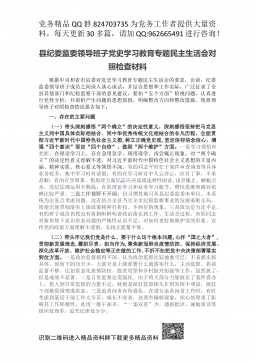
 2024-12-03 6
2024-12-03 6 -
A文秘笔杆子工作资料汇编手册(近70000字)VIP免费

 2024-12-03 3
2024-12-03 3 -
20220106县领导班子党史学习教育专题民主生活会对照检查材料VIP免费
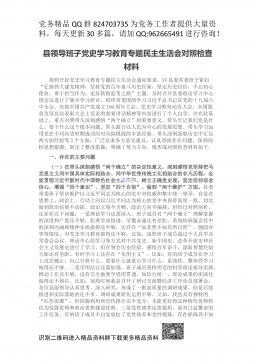
 2024-12-03 4
2024-12-03 4 -
经济开发区党工委书记管委会主任述学述职述廉述法报告VIP免费
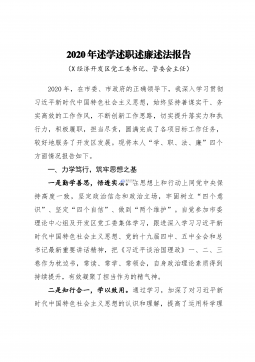
 2024-12-03 34
2024-12-03 34 -
20220106政府领导专题民主生活会五个方面对照检查材料VIP免费
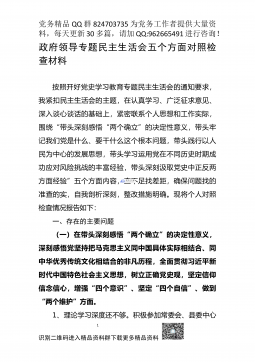
 2024-12-03 11
2024-12-03 11 -
派出所教导员述职述廉报告6篇VIP免费
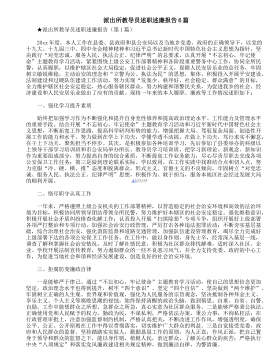
 2024-12-03 8
2024-12-03 8 -
民主生活会对县委班子及其成员批评意见清单VIP免费
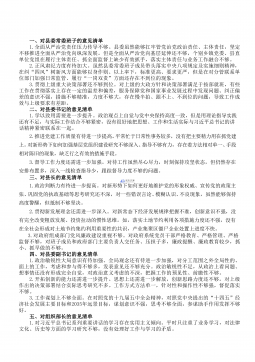
 2024-12-03 50
2024-12-03 50
分类:图书资源
价格:10玖币
属性:15 页
大小:728.74KB
格式:PDF
时间:2025-04-27



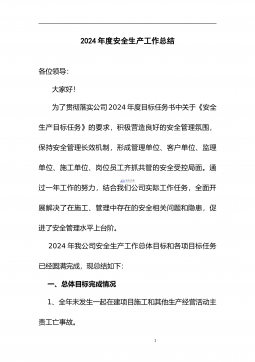
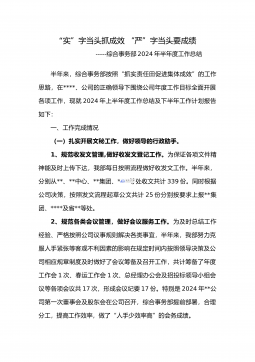
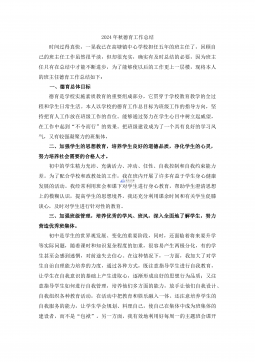
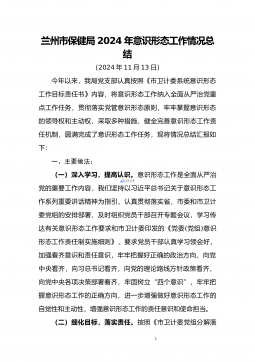
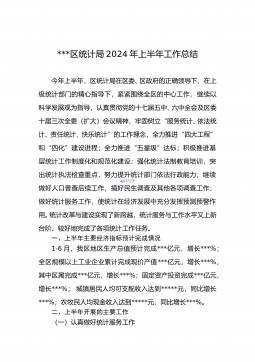
 渝公网安备50010702506394
渝公网安备50010702506394
